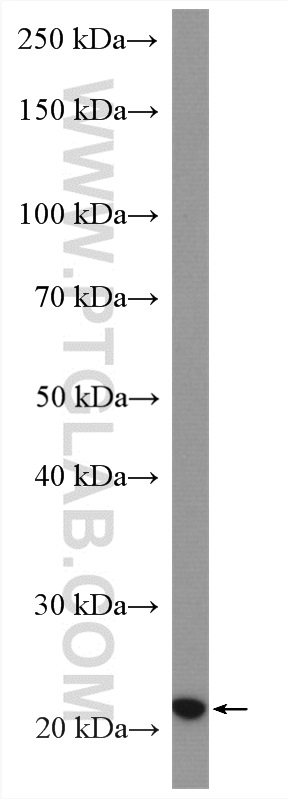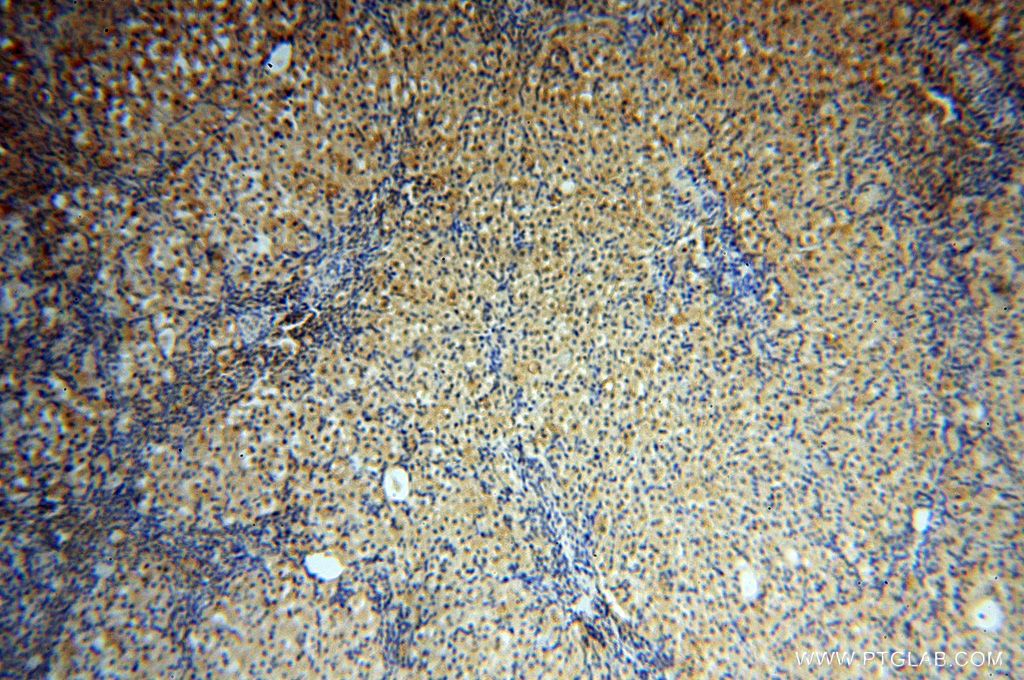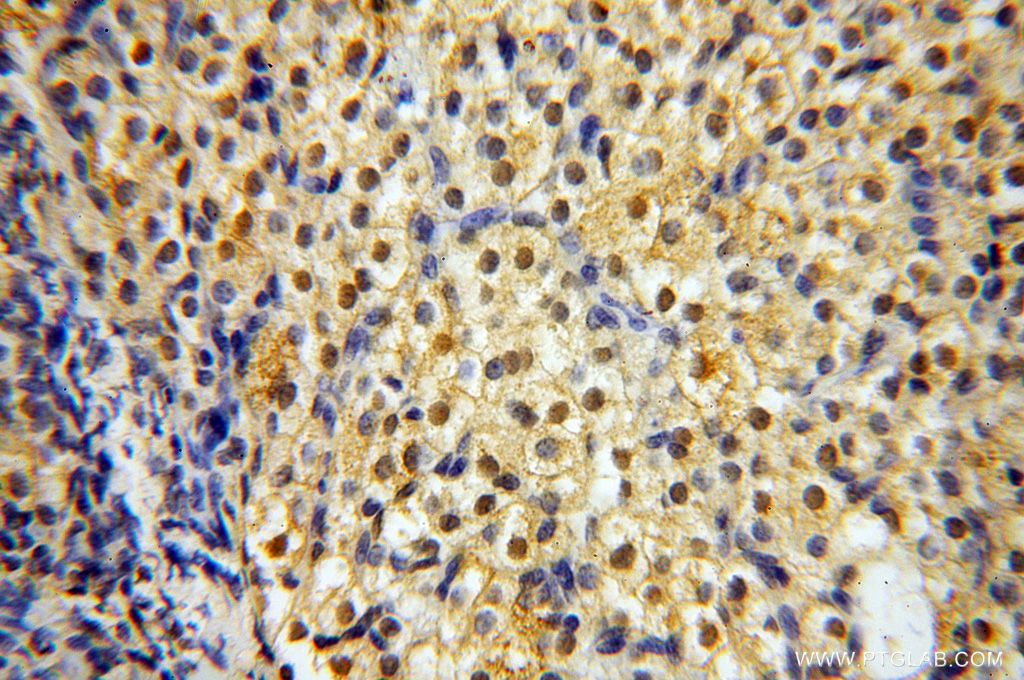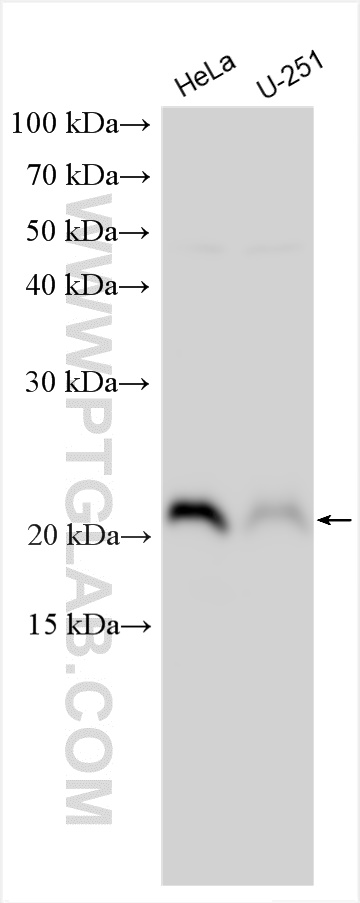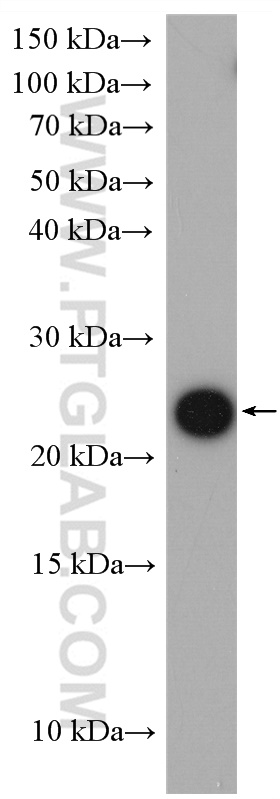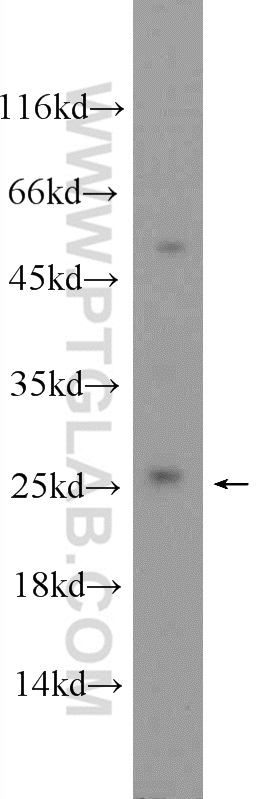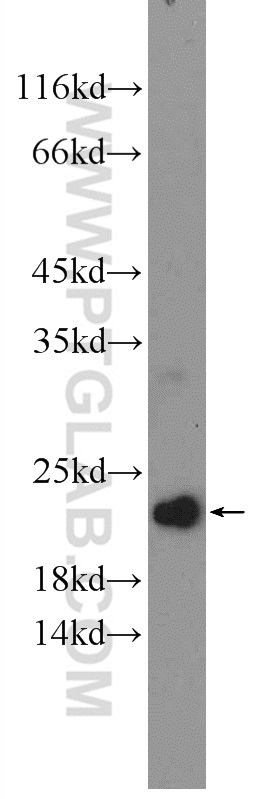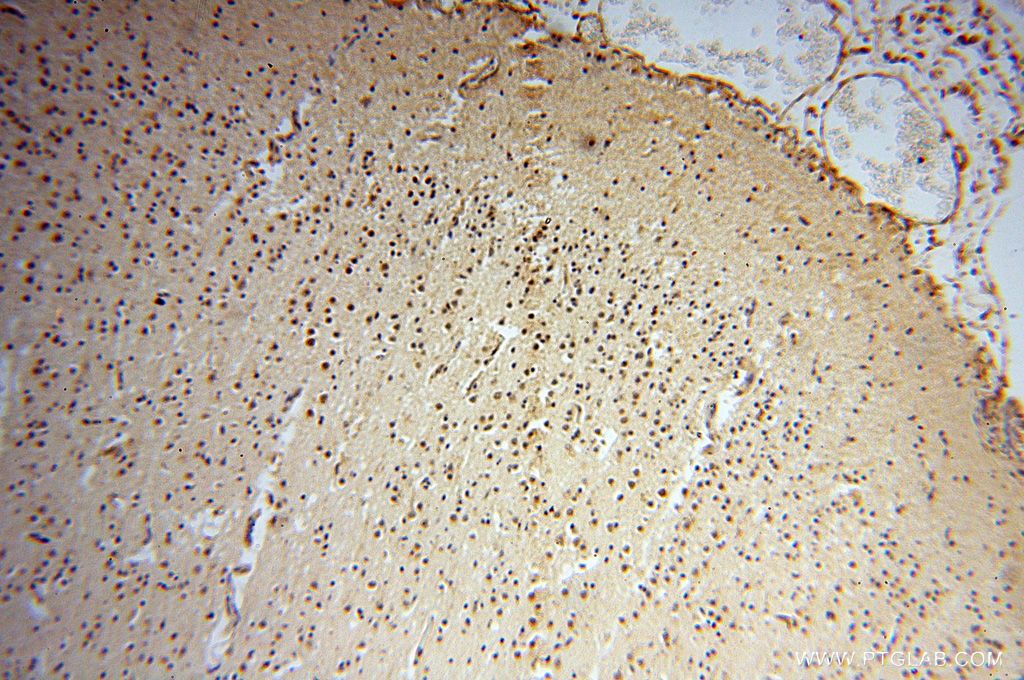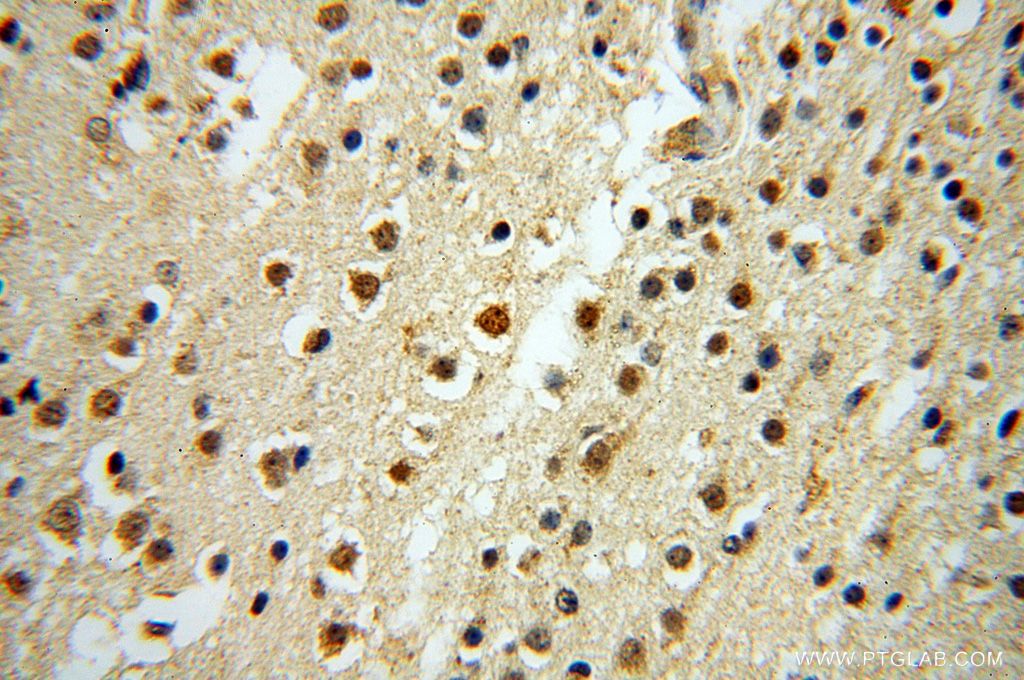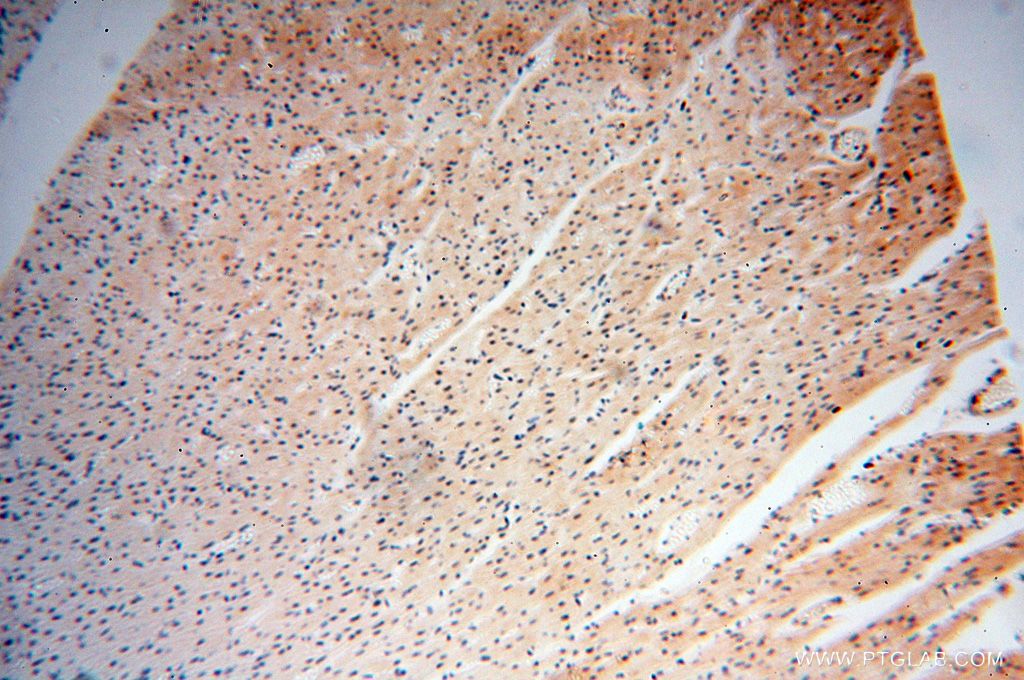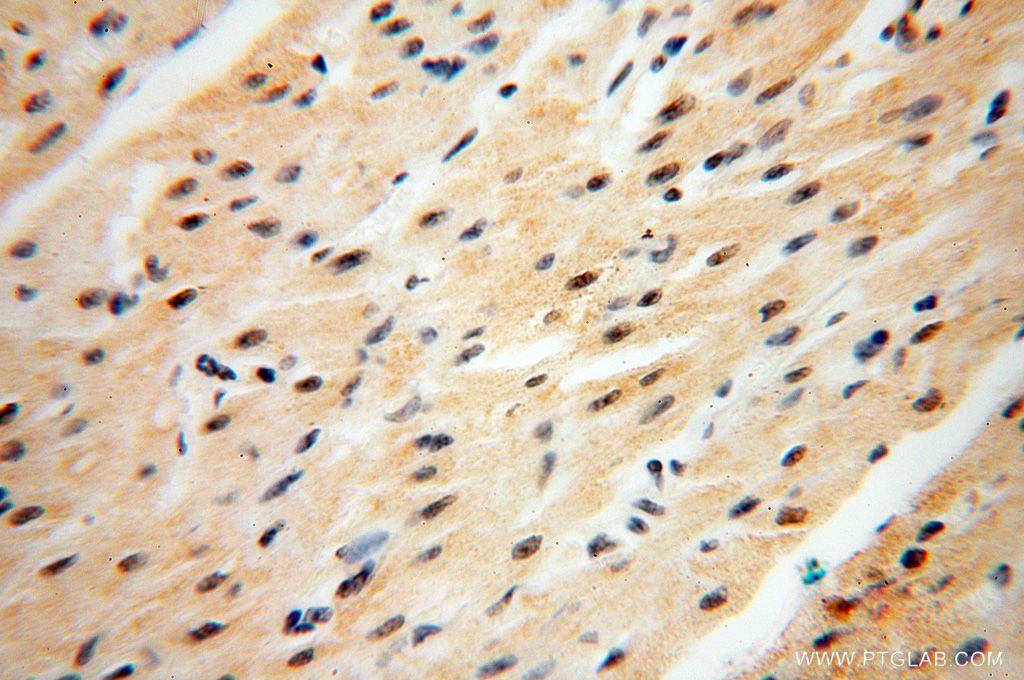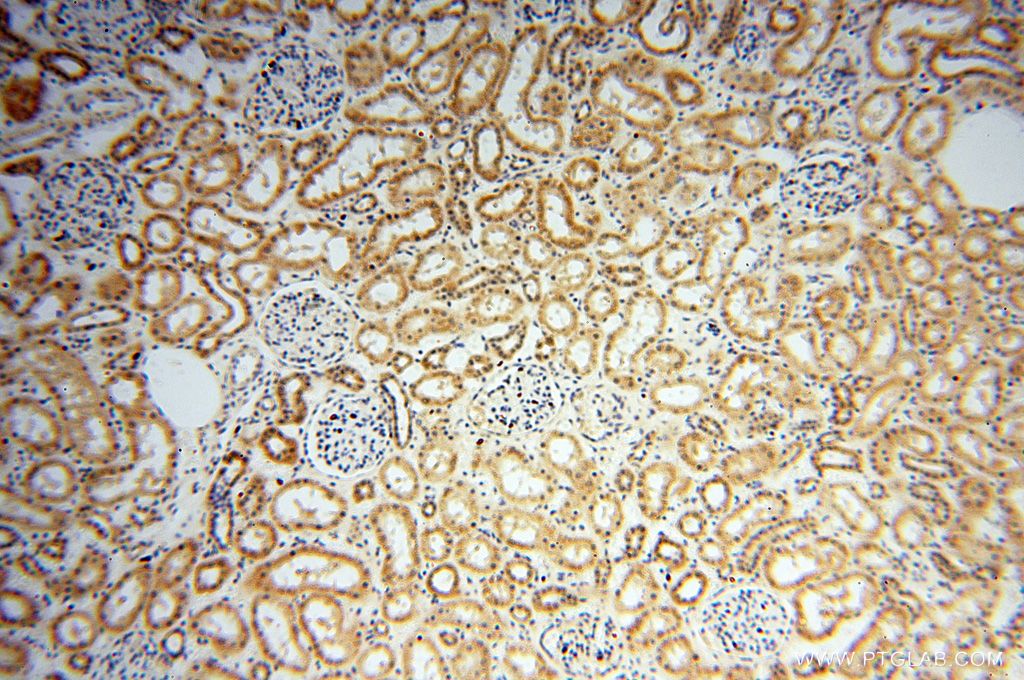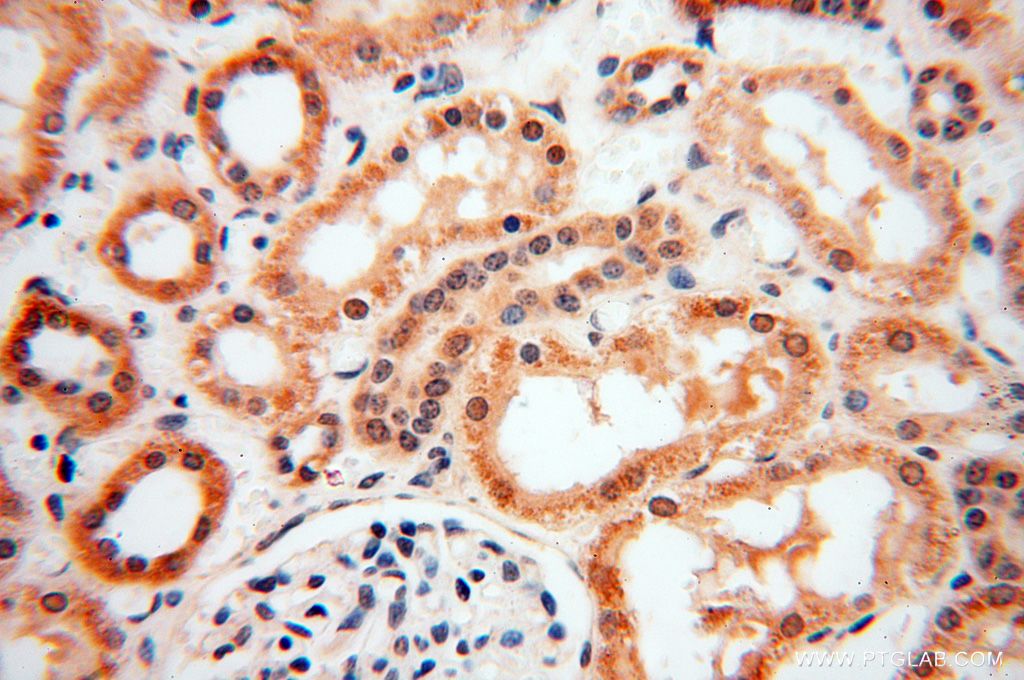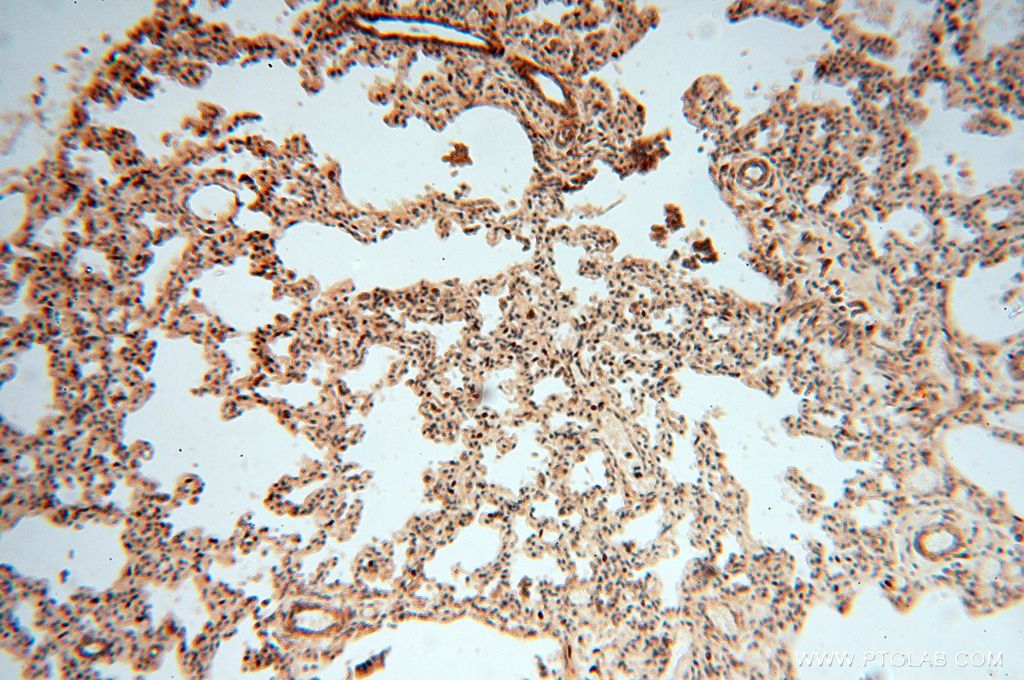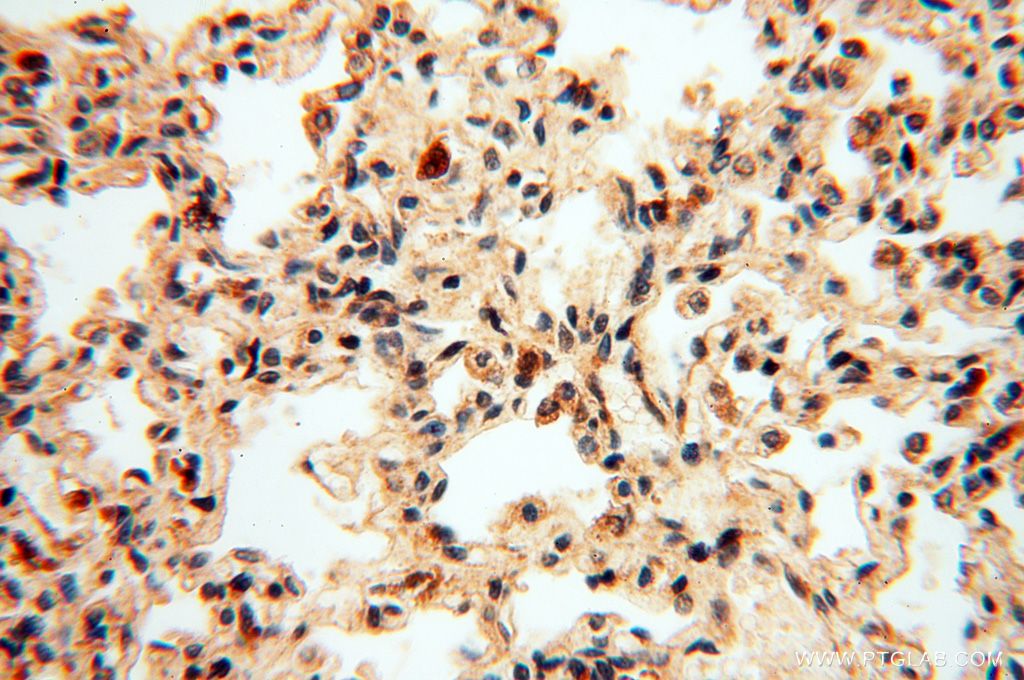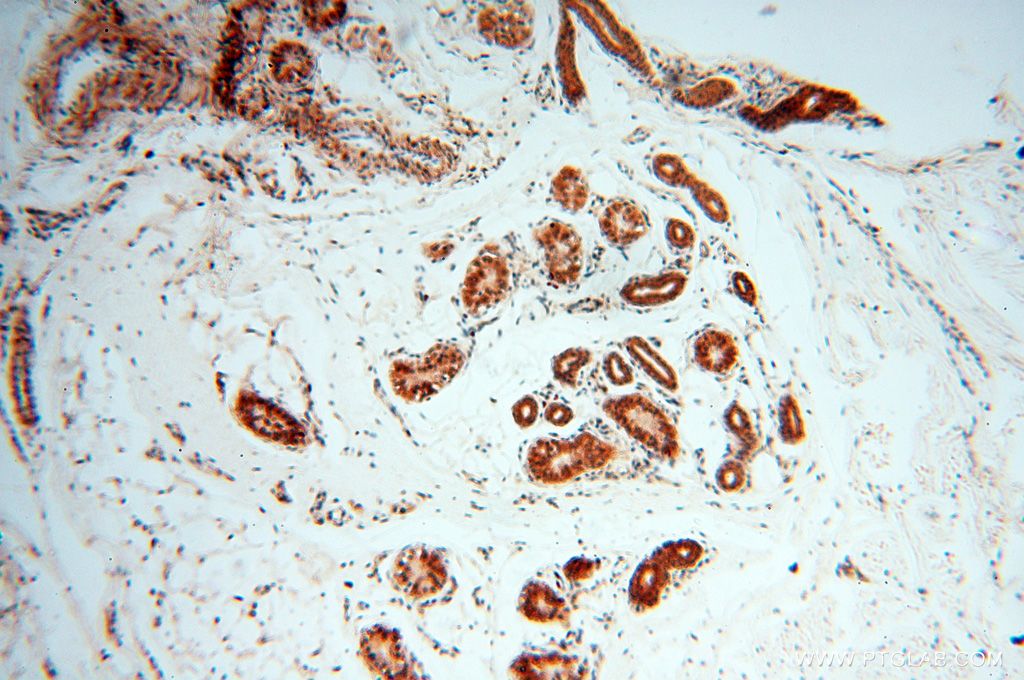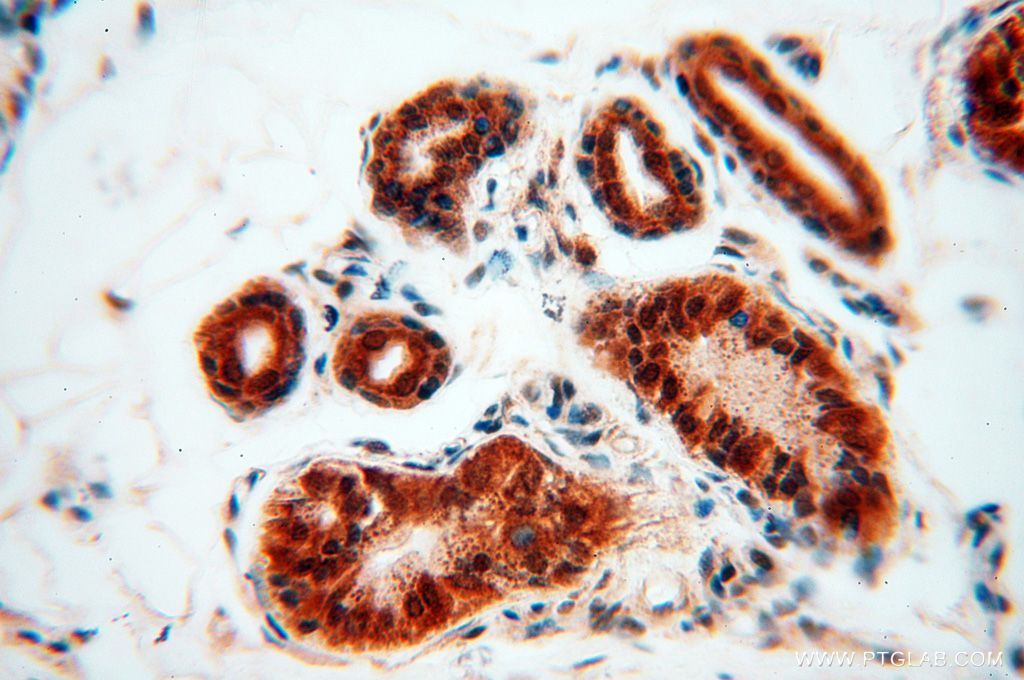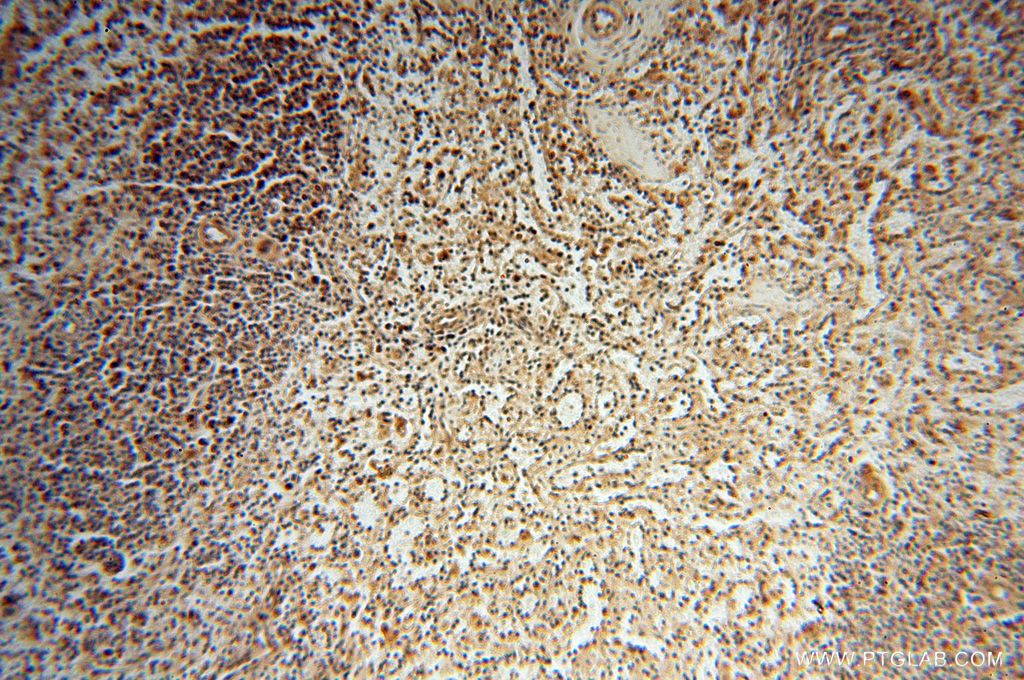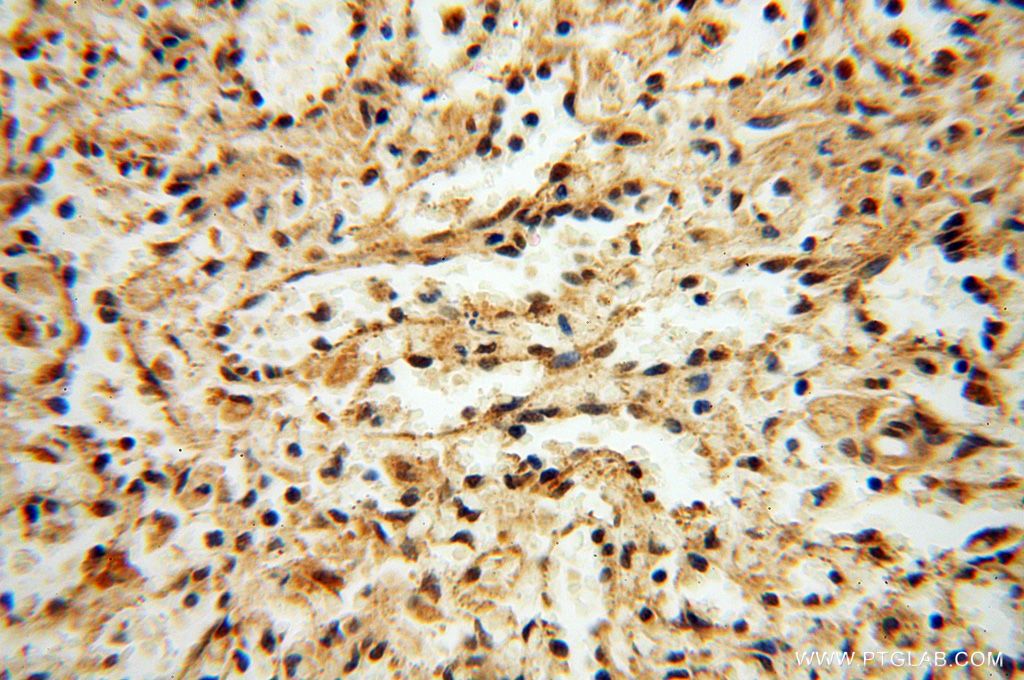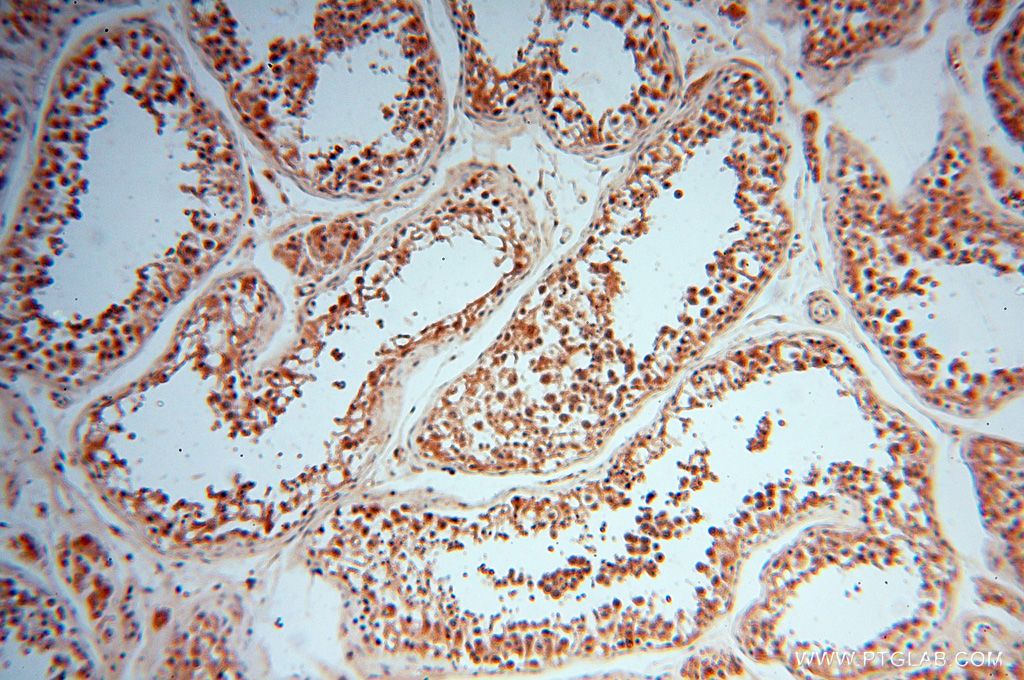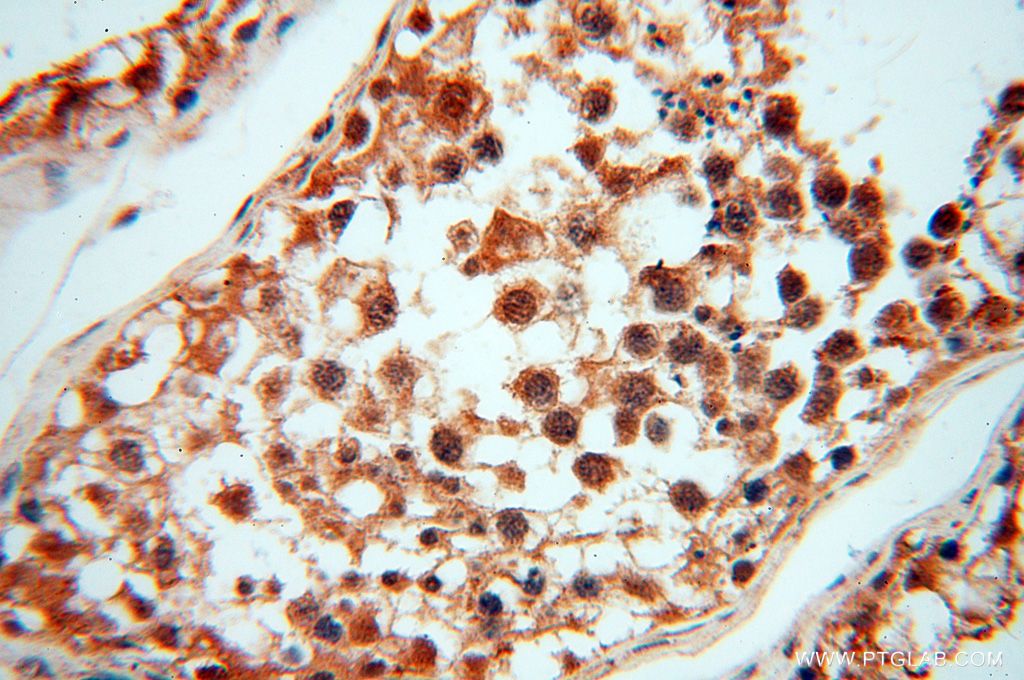验证数据展示
经过测试的应用
| Positive WB detected in | Caco-2 cells, HeLa cells, mouse heart tissue, mouse testis tissue, U-251 cells |
| Positive IHC detected in | human ovary tissue, human brain tissue, human heart tissue, human kidney tissue, human lung tissue, human skin tissue, human spleen tissue, human testis tissue Note: suggested antigen retrieval with TE buffer pH 9.0; (*) Alternatively, antigen retrieval may be performed with citrate buffer pH 6.0 |
推荐稀释比
| 应用 | 推荐稀释比 |
|---|---|
| Western Blot (WB) | WB : 1:500-1:1000 |
| Immunohistochemistry (IHC) | IHC : 1:20-1:200 |
| It is recommended that this reagent should be titrated in each testing system to obtain optimal results. | |
| Sample-dependent, Check data in validation data gallery. | |
产品信息
14717-1-AP targets CNBP in WB, IHC, ELISA, IF applications and shows reactivity with human, mouse samples.
| 经测试应用 | WB, IHC, ELISA Application Description |
| 文献引用应用 | WB, IF |
| 经测试反应性 | human, mouse |
| 文献引用反应性 | human, mouse |
| 免疫原 | CNBP fusion protein Ag6441 种属同源性预测 |
| 宿主/亚型 | Rabbit / IgG |
| 抗体类别 | Polyclonal |
| 产品类型 | Antibody |
| 全称 | CCHC-type zinc finger, nucleic acid binding protein |
| 别名 | RNF163, PROMM, DM2, CNBP1, Cellular nucleic acid-binding protein |
| 计算分子量 | 19 kDa |
| 观测分子量 | 20-25 kDa |
| GenBank蛋白编号 | BC000288 |
| 基因名称 | CNBP |
| Gene ID (NCBI) | 7555 |
| RRID | AB_2081548 |
| 偶联类型 | Unconjugated |
| 形式 | Liquid |
| 纯化方式 | Antigen affinity purification |
| UNIPROT ID | P62633 |
| 储存缓冲液 | PBS with 0.02% sodium azide and 50% glycerol , pH 7.3 |
| 储存条件 | Store at -20°C. Stable for one year after shipment. Aliquoting is unnecessary for -20oC storage. |
背景介绍
Single stranded DNA-binding protein, with specificity to the sterol regulatory element (SRE). Involved in sterol-mediated repression.
实验方案
| Product Specific Protocols | |
|---|---|
| WB protocol for CNBP antibody 14717-1-AP | Download protocol |
| IHC protocol for CNBP antibody 14717-1-AP | Download protocol |
| Standard Protocols | |
|---|---|
| Click here to view our Standard Protocols |
发表文章
| Species | Application | Title |
|---|---|---|
PLoS Biol Phosphoglucomutase 1 inhibits hepatocellular carcinoma progression by regulating glucose trafficking.
| ||
Mol Cell Proteomics Quantitative proteomics reveals the essential roles of STIM1 in the testicular cord formation in mouse testis. | ||
iScience Proteostasis regulated by testis-specific ribosomal protein RPL39L maintains mouse spermatogenesis. | ||
Reproduction Cellular nucleic acid-binding protein is vital to testis development and spermatogenesis in mice. |
